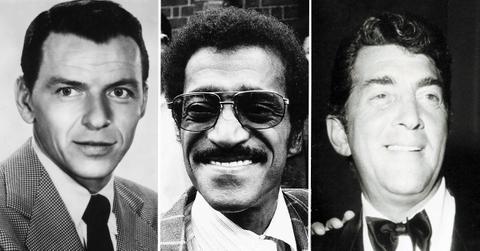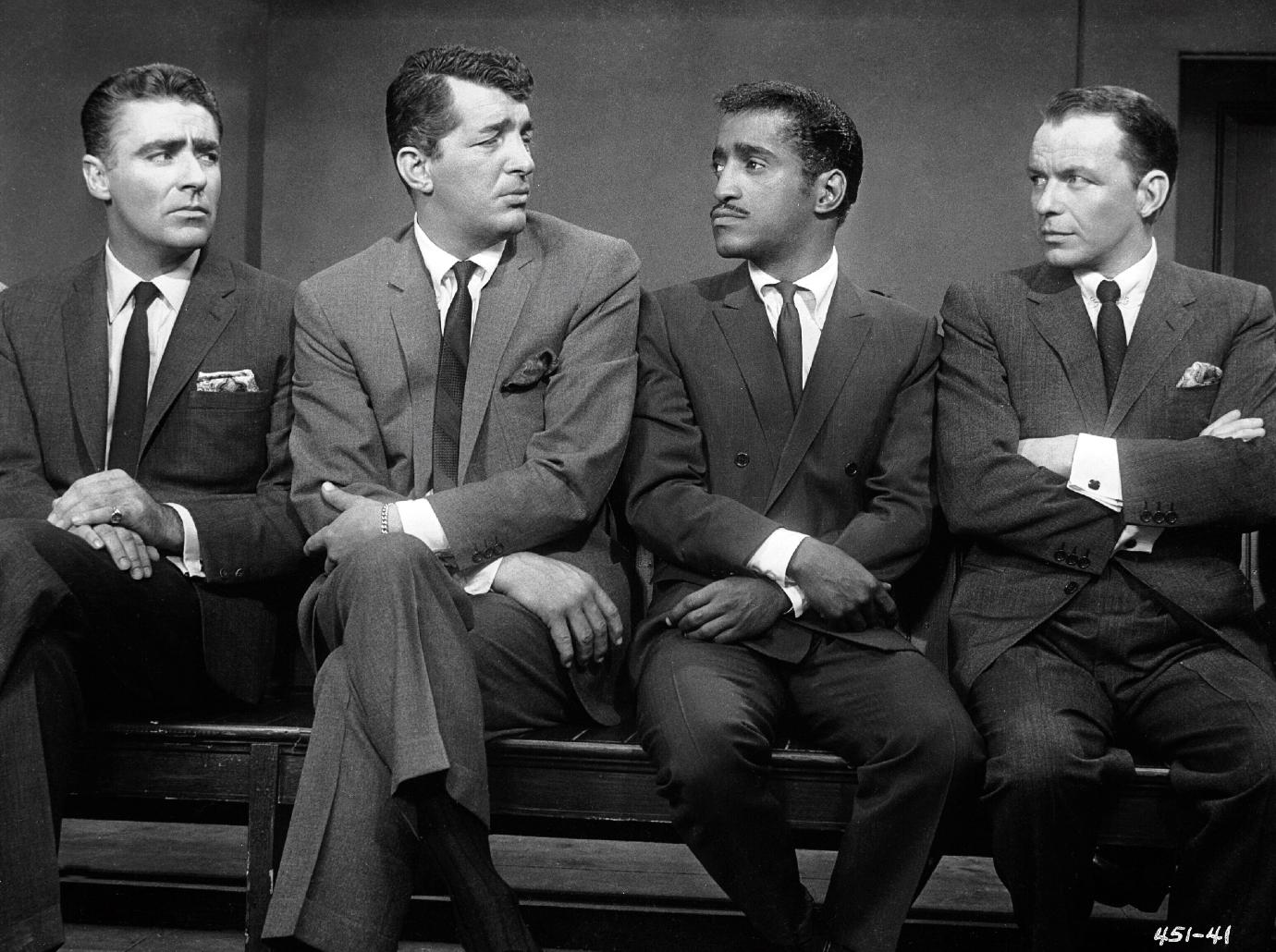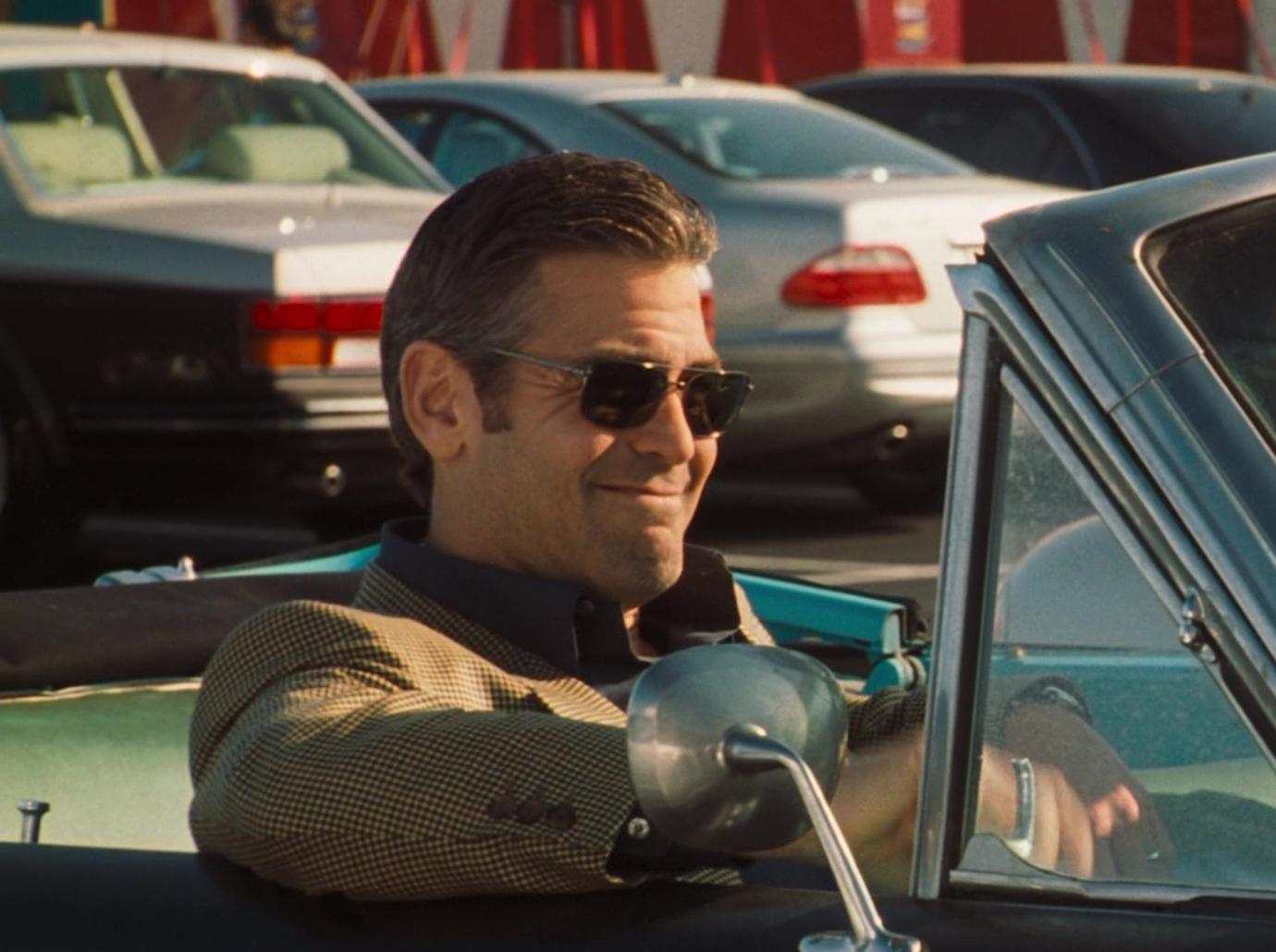 ENTERTAINMENT
ENTERTAINMENTThe Original Ocean’s 11: The True Story Behind The Film That Made The Rat Pack

March 28 2022, Published 5:09 a.m. ET
The original 1960-released Ocean’s 11 is the definitive Rat Pack movie, oozing cool from every frame. It was also the first movie all five Rat Pack members – Frank Sinatra, Dean Martin, Sammy Davis Jr., Peter Lawford and Joey Bishop – appeared in together.
Legend has it that Peter Lawford first heard the broad outline of the heist film’s story from Hollywood director Gilbert Kay. He, in turn, had heard the idea — about Danny Ocean, who corrals 10 of his fellow World War II paratrooper buddies to rob five Las Vegas casinos in one night —from a gas station attendant. Lawford snapped up the rights in 1958, with William Holden in mind for the lead role of Ocean. When Sinatra heard the plot, he reportedly said, “Forget the movie, let’s pull the job!”
The singer-actor moved into the lead role as the heist’s mastermind. He pulled down a salary of $700,000 ($6 million today) to star.
As the film’s ensemble came together, Dean Martin was cast as wisecracking lounge singer Sam Harmon. And Sammy Davis Jr. took the role of Josh Howard, a vet who becomes a sanitation worker to pull off the con. Lawford signed on as wealthy rake Jimmy Foster, and Joey Bishop took the role of “Mushy” O’Connors. Rat Pack “mascots” Angie Dickinson and Shirley MacLaine also had parts in the film.
Lewis Milestone, director of the antiwar epic All Quiet on the Western Front (1930), helmed the picture.
Renowned director Billy Wilder was one of the writers who worked on the Ocean’s 11 script as a favor to Sinatra. The star thanked Wilder by gifting him with a sketch by Pablo Picasso. Despite script-doctoring by Wilder, most of the scenes between the actors — who had known each other for years by then — were reportedly ad-libbed.

In the film, the 11 partners in crime ring in the New Year by blowing up an electrical transmitter. The explosion opens the cashier cages at five casinos, allowing the gang to successfully relieve them of $5 million. Despite pulling off the heist with military precision, one of Ocean’s crew, Tony Bergdorf (Richard Conte), dies from a heart attack during the job. And the friends hit another snag when former gangster Duke Santos, played by Cesar Romero, learns of the heist and thwarts Ocean’s plans to make off with the loot.
As a work-around, Ocean hides the money in Bergdorf ’s coffin, only to see his widow decide to cremate the body. In an ironic twist, the film ends with the stolen millions going up in flames.
The final shot of the film shows the men walking past the Sands Hotel’s famous sign, where the iconic five members of the Rat Pack — and stars of the movie — are billed.
Made for $2.8 million, the 127-minute Technicolor film grossed more than $12.3 million in the United States and was ranked by Variety as the 14th highest-earning movie of 1960. (Swiss Family Robinson earned the top spot.)
The initial reviews, however, were mixed. While The New York Times praised the actors, calling the roles “deftly and colorfully played,” the newspaper’s critic took issue with the caper’s “surprisingly nonchalant and flippant attitude toward crime.”
One man was very impressed with Ocean’s 11: Jack L. Warner, of Warner Bros., entered into a longtime contract with Frank Sinatra and his Artanis production company.
Want OK! each day? Sign up here!

Ocean’s 11 was largely shot on location in Las Vegas in January and February of 1960. Some reports claimed that Sinatra and his fellow Rat Packers were not exactly giving their all to the craft of acting, but instead to everything that Sin City had to offer.
Bishop was known to always show up at the 9 a.m. call time. Lawford would only shoot in the morning. Martin and Davis reported to work in the afternoon. And Sinatra, the film’s star? He allegedly didn’t show up on set until 3 o’clock in the afternoon. He’d then work for 20 minutes and start drinking.
One story goes that as soon as 5 p.m. hit, all of the Rat Packers called, “Cut.” Most of the cast were also performing in the Sands’ Copa Room after shooting wrapped each day, in a show called the “Summit at the Sands.” After the evening performance, the gang supposedly partied late into the night. And the Rat Pack’s wild ways were evident when they showed up on set looking the worse for wear the following day.
No matter – rather than harm the movie, that relaxed attitude to work and love of a party came through on the screen… and cemented the Rat Pack legend forever, long before George Clooney and Brad Pitt reinvented it for a new generation.



